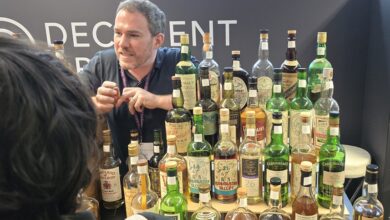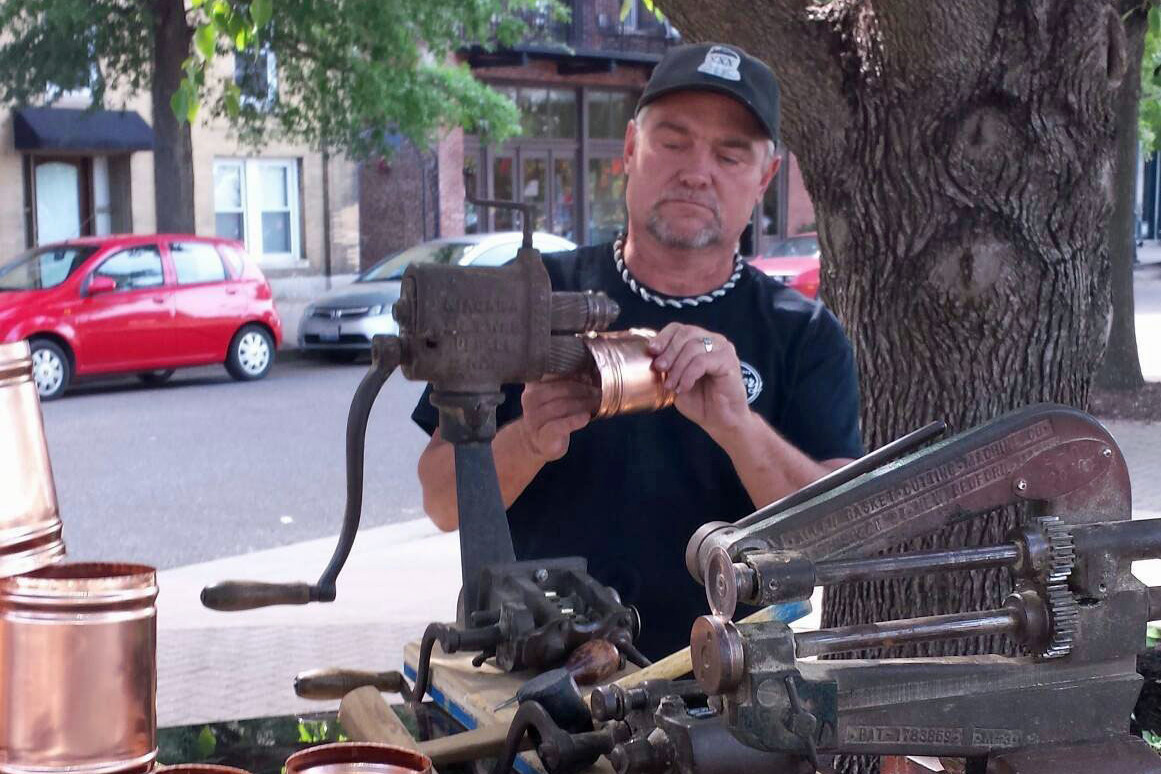Miss Whisky Talks Scotch
By Richard Thomas

(Credit: Miss Whisky)
“Women in whiskey” refers to more than just the emergence of women as part of the whiskey-drinking market. The phrase also refers to the growing role women play in the whiskey business.
Women are now whiskey-makers and entrepreneurs, such as Morrison Bowmore Master Blender Rachel Barrie and Brenne co-founder Allison Patel. In New York, whiskey sommelier Heather Greene has become an almost celebrated figure in that city’s media. And insofar as the media itself goes, women have also joined the ranks of whiskey writers. An early entrant was Alwynne Gwilt, aka Miss Whisky, who started blogging from her London base in 2011. Gwilt was kind enough to spare The Whiskey Reviewer some time to talk about her experiences as a whiskey blogger and her own particular tastes in whiskey.
RT: Your blog focuses on Scotch, Irish, and Japanese whiskeys, while you yourself are a Canadian expat living in London. Where is the Canadian whiskey?
AG :That’s a very good point! As it happens, as I didn’t start drinking whisky until I moved over to the UK, I’d never really tried Canadian whisky before when I lived there. Now that I am very much into whisky, it is extremely hard to get a hold of any Canadian whisky in the UK (I’ve only ever come across Canadian Club and Crown Royal here) so I’ve not had a chance to add much to my repertoire but it’s definitely on my to-do list!
RT: You’ve been Miss Whisky since November 2011. What do you think of the experience of becoming a whiskey blogger?
AG: Thus far, it’s been excellent. As it happens, I didn’t actually intend to get into the blogging side of things. I’d been a more ‘traditional’ print, broadcast and online journalist for the 10 years prior to setting up the site and didn’t have any experience with the blogging world. I attended a class on blogging in January 2011 and a couple of months afterwards I approached one of the speakers – Tim Hayward, a well-known food editor/writer here in the UK – for some advice and said I wanted to start writing about whisky and had plans to pitch stories to newspapers. He said I should absolutely get involved in the blogging side first and as I researched the market, I decided it was a wise idea. I built on things (researching, developing the site) for six months after that and launched in November 2011. I’ve – thus far – loved making the transition into the blogging world after all my years as a journalist and have found it to be friendly, helpful and encouraging.
RT: Whiskey fans generally have a staple whiskey (or three) for everyday sipping, something that is nice, but not too expensive. What characteristics do you look for in such a thing, and would you mind sharing with us what your own staples might be?
AG: This is inevitably a tricky question for me because there are a huge number of whiskies I love. If I were looking for whiskies such as this, I would want to have a few (let’s say three) that tick different boxes: something lighter and easy going, something a bit peaty, and something that works well with soda, for when I don’t just want a straight dram. If I were looking at it that way, whiskies I’d consider to be “go-to” would be a Balvenie DoubleWood 12 or Redbreast 12 for the everyday, easy drinking drams; a Talisker 10 for my peaty selection; and a Yamazaki 12 for mixing with soda (it’s glorious neat but stands up brilliantly to soda).
RT: Let’s say you were talking to whiskey-lovers of your native spirit, Canadian, and trying to sell them on the virtues of a fine Speyside or Islay. What would you tell them?
AG: I would begin by telling them a bit about the region (say, it’s Speyside), about the history and the amazing distilleries that exist there and that have been producing whisky for so many generations. Then I’d sell them on the fact that in one tiny region, you can get such a vast array of whisky styles so it’s not only a great region to be familiar with but perfect for visiting if one is over here. I’d also link the region in with Canada, as I consider it to be my home from home over here, as the people and landscapes remind me so much of Canada.
RT: Whiskey fans go back and forth about adding water, while some consider ice a heresy and others swear by it. As someone who hosts tastings, how do you approach the matter of going neat, with water, and/or with ice?
AG: I’m very much in the camp of “if you’ve bought whisky, do what you like with it”. I’m never presriptive because each of us has a different palate and can find a way to enjoy each whisky on an individual basis. The only things I suggest are to try the whisky neat just once so they can get a good feel of what style it is, and to try to just add a few drops of water at a time – after all, it’s like cooking: you can always add more salt but you can never take it away. As to ice, again, if that is how you would like to drink whisky that’s all good – I only explain that the ice may shut down some of the esters escaping the glass (and therefore have less of an array of scents) and it may freeze the palate, therefore decreasing the amount of flavour one might pick up from it. I’d rather be informative than prescriptive!
RT: Someone you know is coming to London for a few days. What bar should they hit up for a good, rare dram, and where should they go shopping for that special bottle they won’t find anywhere else?
AG: London has a plethora of places that offer rare drams – in fact, it tends to lack places that are good old-fashioned pubs with loads of cheaper, more accessible drams. If you’re after something special, head to the Athenaeum Hotel on Piccadilly or the Capital Hotel in Knightsbridge, both of which are run by exceptionally well versed whisky experts. If you’re after a more chilled-out bar with great selections, head to the hidden away Britannia Pub on Kipling Street near Borough Market. And if you want whisky cocktails? You’re in good hands at Callooh Callay or the Worship Street Whistling Shop in Shoreditch or for Japanese whisky, check out Mizuwari on Old Compton Street which excels at Japanese whisky cocktails. For that special bottle, The Vintage House on Old Compton Street is excellent, as is Milroy’s of Soho, around the corner on Greek Street. And, if you’re near London Bridge, you have to head to The Whisky Exchange






2 Comments